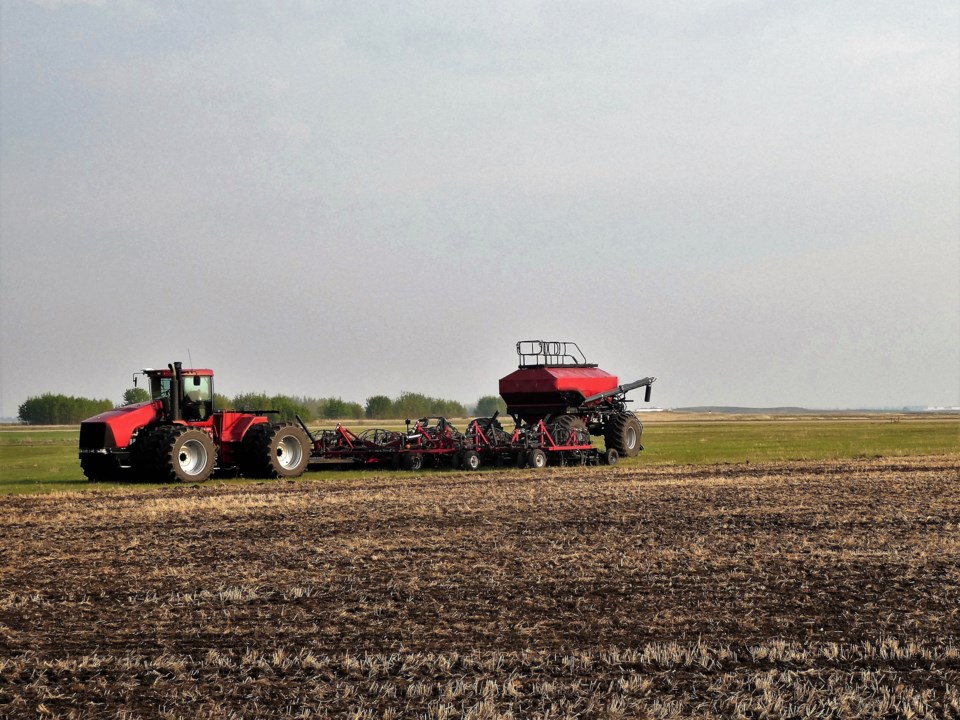WEYBURN – Seeding has begun in the southeast region of the province, but is behind most other regions due to the wet conditions from heavy snowfall in April, and more rain that fell on the weekend. Weather reports peg rainfall at around 12 mm of rain on Friday and Saturday in the Weyburn area.
About three per cent of fields are seeded in the southeast region, according to Sask Agriculture, with three per cent in Weyburn’s crop district (2A) and four per cent in the Radville-Lake Alma district (3ASE).
This is well behind the five-year average of 22 per cent for this time of year. Provincially seeding is at nine per cent, well behind the five-year average of 23 per cent completed by this time of year.
For Weyburn area producer, Dale Mainil and his sons started seeding on their driest land on Wednesday, planting lentils and durum wheat. He noted some neighbours started seeding as early as May 5 or 6.
“We put a couple of good days in until the rain,” he said Monday. “The forecast looks good this week, so I would imagine it will get very busy for us farmers.”
Mainil noted that he would far rather be dealing with moisture than a drought.
Sask Ag said the southeast region is starting the growing season with good moisture conditions after the snowstorms of March and April.
The average numbers for moisture values on crop land are 19 per cent surplus, 78 per cent adequate, two per cent short and one per cent very short.
Hay and pasture land is rated as seven per cent surplus, 76 per cent adequate, 16 per cent short and one per cent very short.
Producers would like to see warm, dry weather in the forecast so they can get into their fields.
There has not been very much field activity in the region due to the wet field conditions. Most of the work is being done in the northwestern half of the southeast region, where minor seeding and spraying is underway as weather allows.
For livestock producers, calving is coming to an end and livestock producers will soon begin assessing their pastures and moving cattle out when they can.
The cool weather in April was good for moisture retention, but it did not allow pastures to rapidly regrow. Warm weather and some light rains would be appreciated by many livestock producers to ensure cattle have adequate feed in the pastures.



